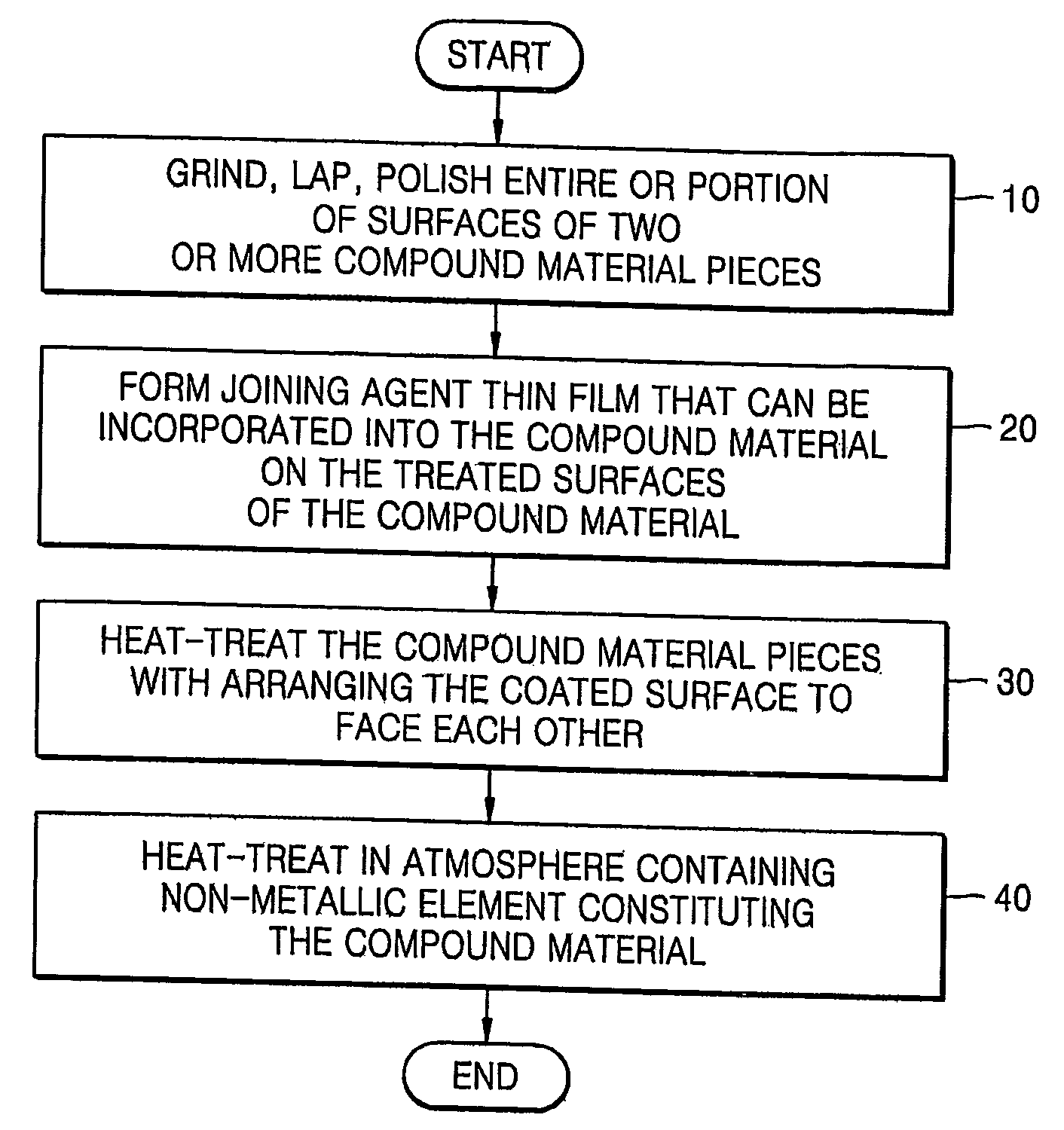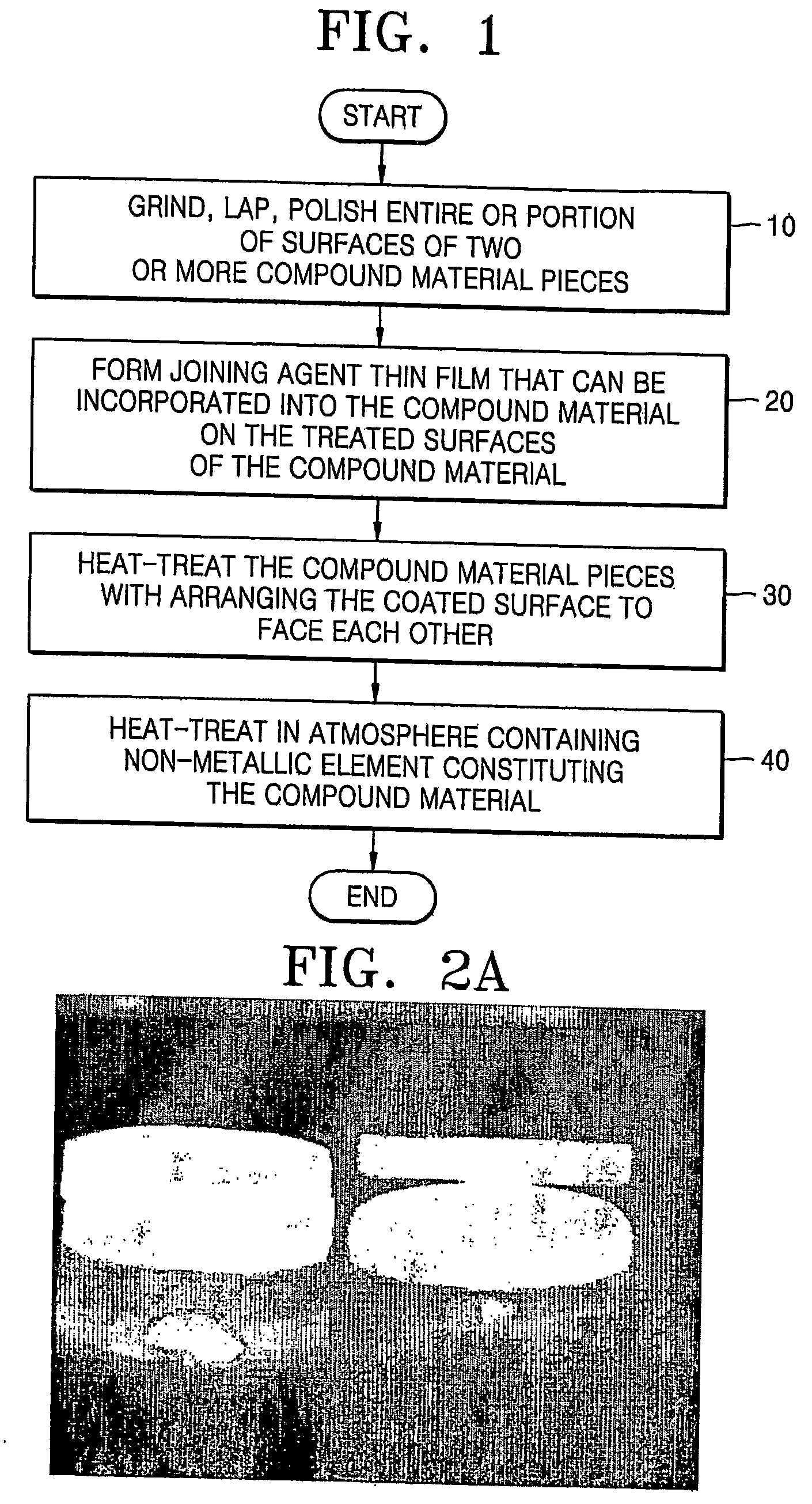Method of joining ceramics: reaction diffusion-bonding
a technology of diffusion bonding and ceramics, applied in the field of joining compound materials, can solve the problems of reducing the thermal and chemical stability of the ceramic system, reducing and the industrial product is very rarely monolithic, so as to achieve superior thermal, mechanical, electrical and electronic, and electromagnetic characteristics. the effect of preserving the structural integrity of the material
- Summary
- Abstract
- Description
- Claims
- Application Information
AI Technical Summary
Benefits of technology
Problems solved by technology
Method used
Image
Examples
example 1
Sapphire Joining-1
[0051] A white sapphire was cut to have a desired crystallographic orientation, size, and shape, and the cut surfaces were polished by sequentially using diamond abrasives from 6 μm to 1 μm. The sapphire was cut in a disc shape with a thickness of 5 mm. A pure Al (99.9%) layer having a thickness of 2-4 μm was then deposited on the polished sapphire surface using a vacuum evaporator.
[0052] The deposited surfaces were then arranged to face each other, and heat-treated in a vacuum furnace or a hot press furnace. The heat treatment was performed at temperature in a range of 1,000-1,850° C. for 30 minutes to 2 hours under a pressure in a range of 0-30 MPa in the presence of argon gas. The temperature was increased at a rate of 10° C. per minute until 1,500° C., and at a rate of 5° C. per minute above this temperature. The heat treatment atmosphere can be performed in a vacuum state, or a gas containing hydrogen or oxygen can be used instead of argon. To increase optic...
example 2
Sapphire Joining-2
[0058] The second experiment was carried out under the same conditions as in Example 1, but an Al foil having a thickness of approximately 18 μm was inserted between the two polished surfaces instead of depositing an Al film. The pieces were heat-treated in a vacuum furnace or a hot press furnace. The heat treatment was performed at a temperature in a range of 600-1,850° C. under a pressure in a range of 0-30 MPa for 30 minute to 2 hours in the presence of argon gas. The remaining processes were the same in Example 1.
[0059]FIG. 3 is a photograph of the sapphire crystals joined in this second example using an Al foil. Referring to FIG. 3, the joined sapphire crystals have a strong joint strength and uniform characteristics.
example 3
Joining Al2O3 Ceramics
[0060] Poly-crystalline alumina pieces were prepared by sintering alumina (Al2O3) powder (AKP-50, Sumitomo, Japan) at 1,400° C. in a hot press furnace, and Al, as a joining agent, was deposited on the surfaces to be joined.
[0061] The pieces were arranged so that the to-be-joined surfaces faced each other and were heat-treated under the same conditions as in Example 1. The heat treatment was carried out at a temperature in a range of 1,000-1,850° C. for 30 minutes to 2 hours under a pressure in a range of 0-30 MPa in the presence of argon gas. The remaining steps were the same as in Example 1. The heat treatment can be performed in a vacuum state, or in the presence of a gas containing hydrogen or oxygen instead of argon.
[0062]FIG. 4A is a photograph of Al2O3 ceramics joined in this example. FIG. 4B is a magnified SEM image of the interface region of the joined Al2O3 ceramics in FIG. 4A As seen in FIG. 4B, when Al was used as a joining agent, the joined Al2O3...
PUM
| Property | Measurement | Unit |
|---|---|---|
| pressure | aaaaa | aaaaa |
| thickness | aaaaa | aaaaa |
| temperature | aaaaa | aaaaa |
Abstract
Description
Claims
Application Information
 Login to View More
Login to View More - R&D
- Intellectual Property
- Life Sciences
- Materials
- Tech Scout
- Unparalleled Data Quality
- Higher Quality Content
- 60% Fewer Hallucinations
Browse by: Latest US Patents, China's latest patents, Technical Efficacy Thesaurus, Application Domain, Technology Topic, Popular Technical Reports.
© 2025 PatSnap. All rights reserved.Legal|Privacy policy|Modern Slavery Act Transparency Statement|Sitemap|About US| Contact US: help@patsnap.com



